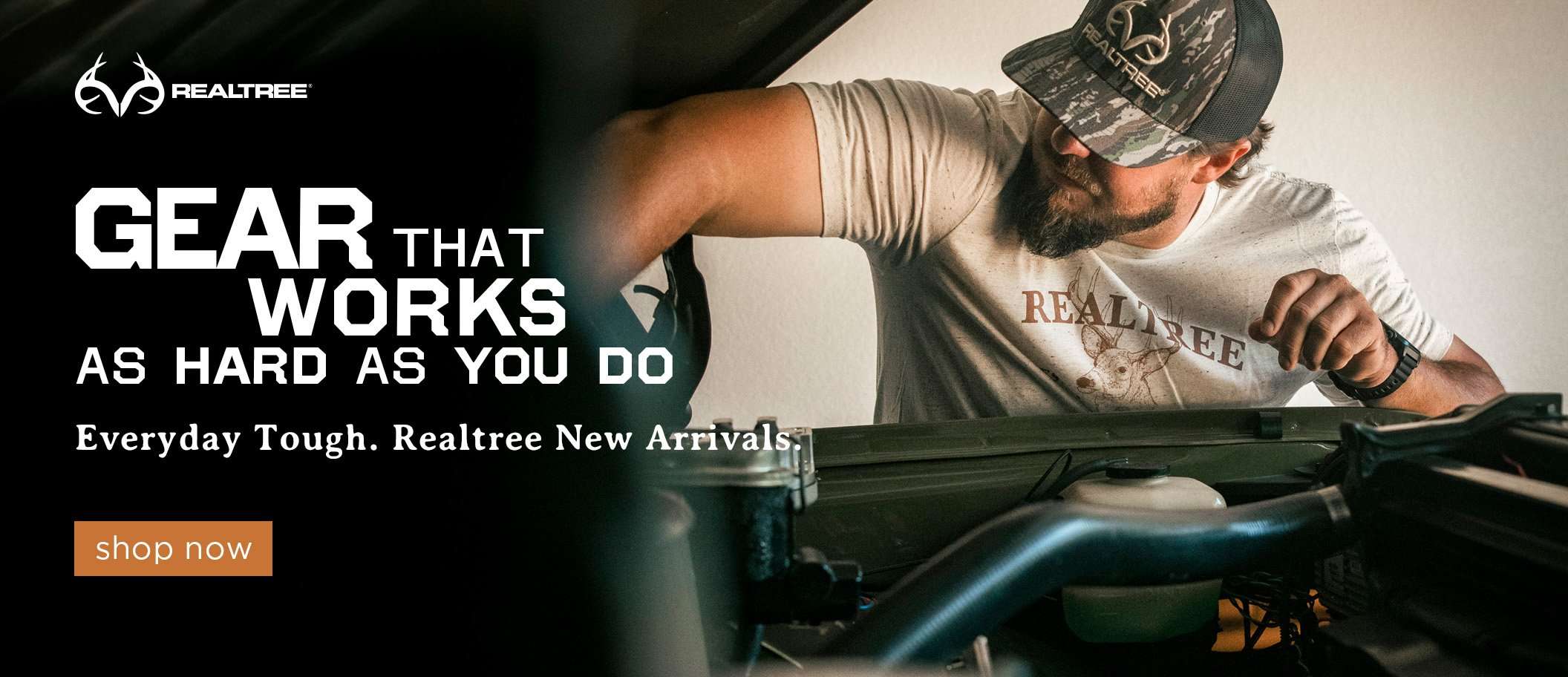A neglected carbon steel skillet can be made good as new if you follow these simple steps
Carbon steel skillets share many of the same properties as your favorite cast iron, and we’ve talked about the similarities and the differences before here. Like cast iron, carbon steel will rust if isn’t cared for properly. Maybe it’s one of yours that you put away wet and forgot about. Or maybe you found one for a steal at a flea market or garage sale. Either way, you can restore that rusty pan to good as new with much less time and effort than it takes to bring a cast iron pan back to life.
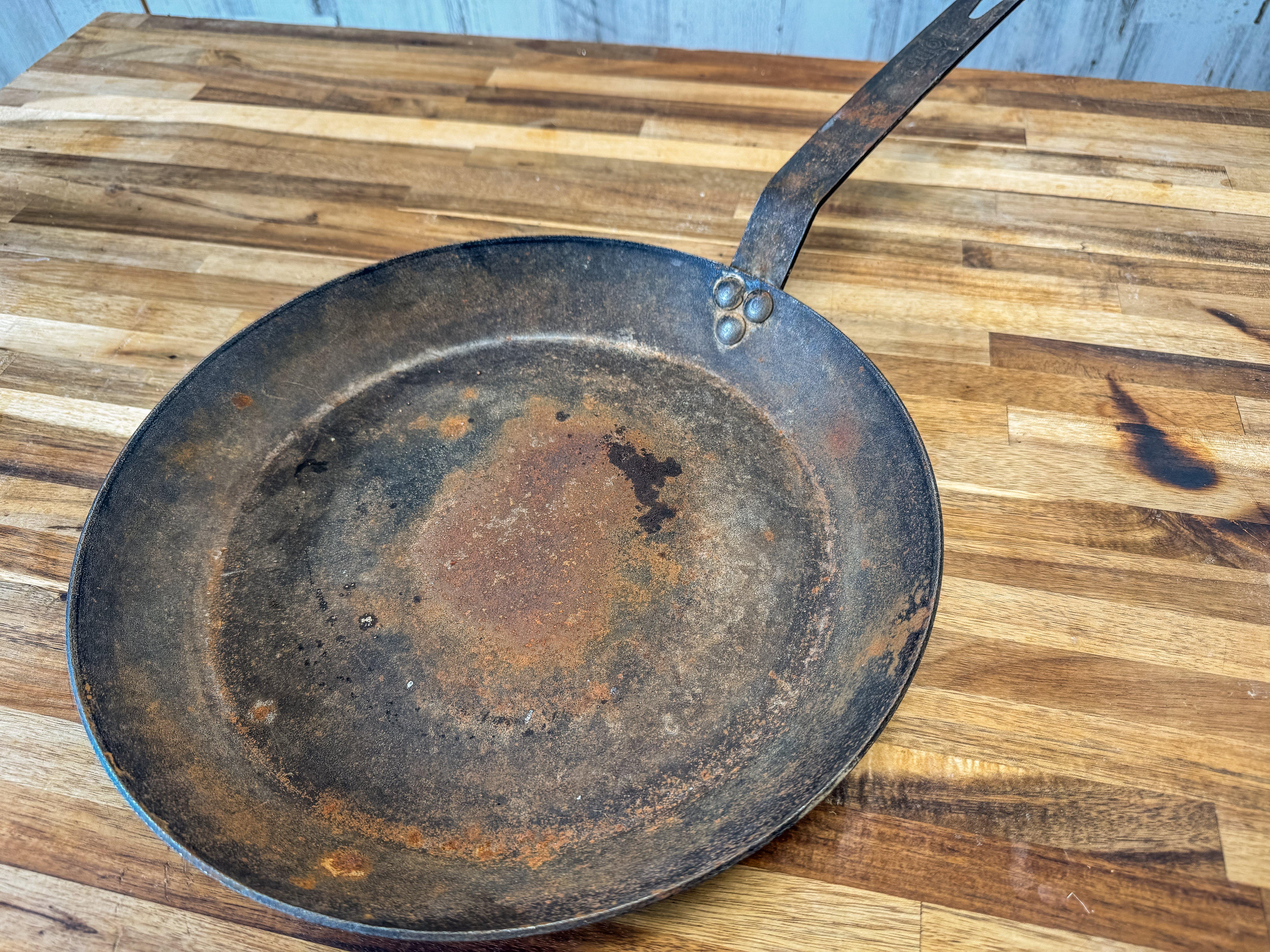
Some would argue that a carbon steel skillet is even more versatile than cast iron. Either way, they are much easier to restore. Images by author.
For starters, you don’t need lengthy heat cycles in the oven to re-season carbon steel. The stove top will work nicely. Second, you don’t need electrolysis tanks, lye baths, or anything like that to remove the rust. On a carbon pan, most of the rust is right on the surface. You can scrub and sand it off in the sink.
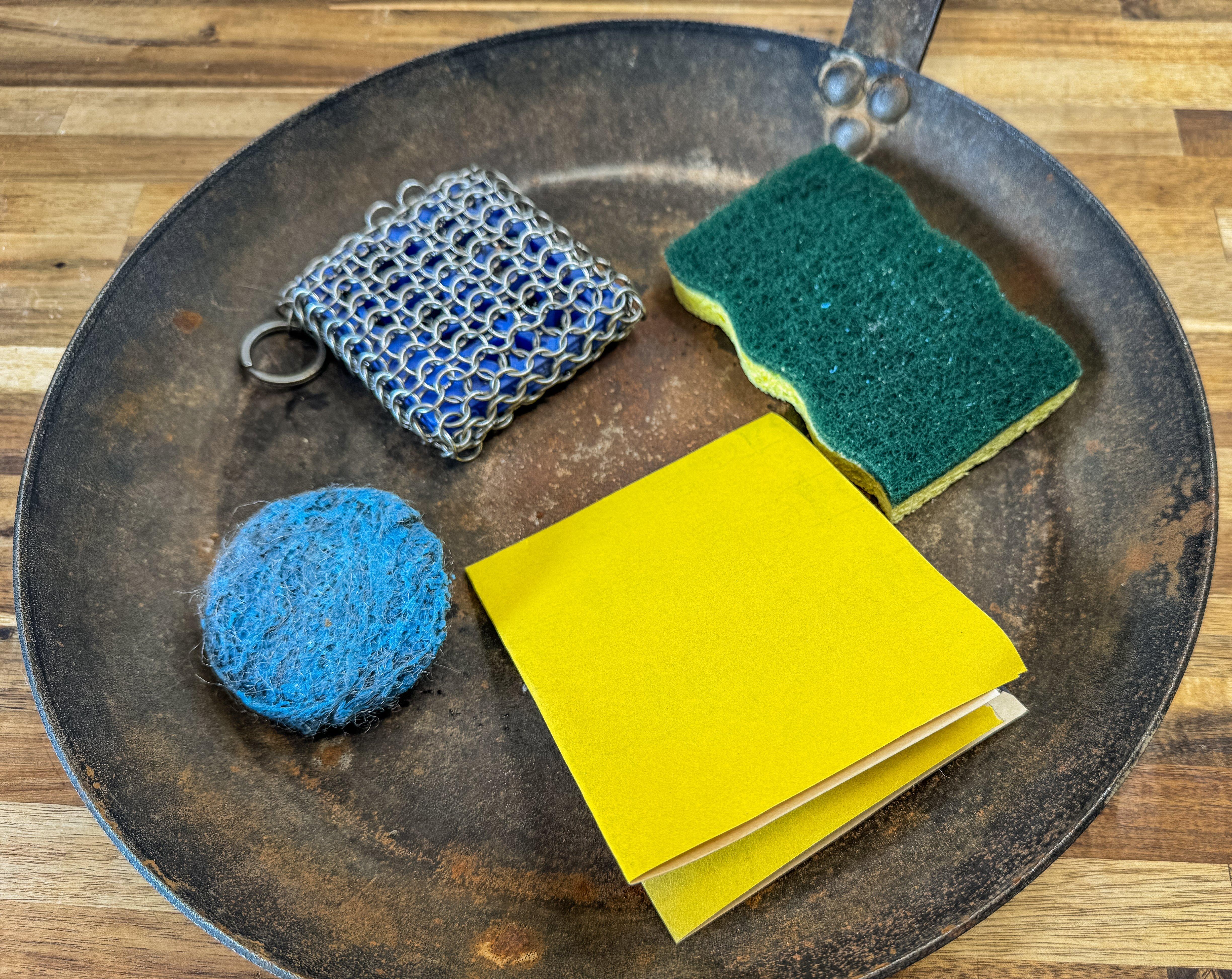
A few simple tools, some dish soap, and some time at the sink will bring the skillet back to life.
You will need a few supplies. Some dishwashing detergent, a Brillo pad sponge, some steel wool (SOS pad with soap works well), a chain mail scrub pad is helpful, and some sand paper. Start with a good wash in hot, soapy water and scrub with the Brillo pad. Next, move to the steel wool. This should remove most of the surface rust. If you still see rust, hit it with the sandpaper. I do all these steps under running water to keep dust down. After sanding, give everything another soapy scrub.
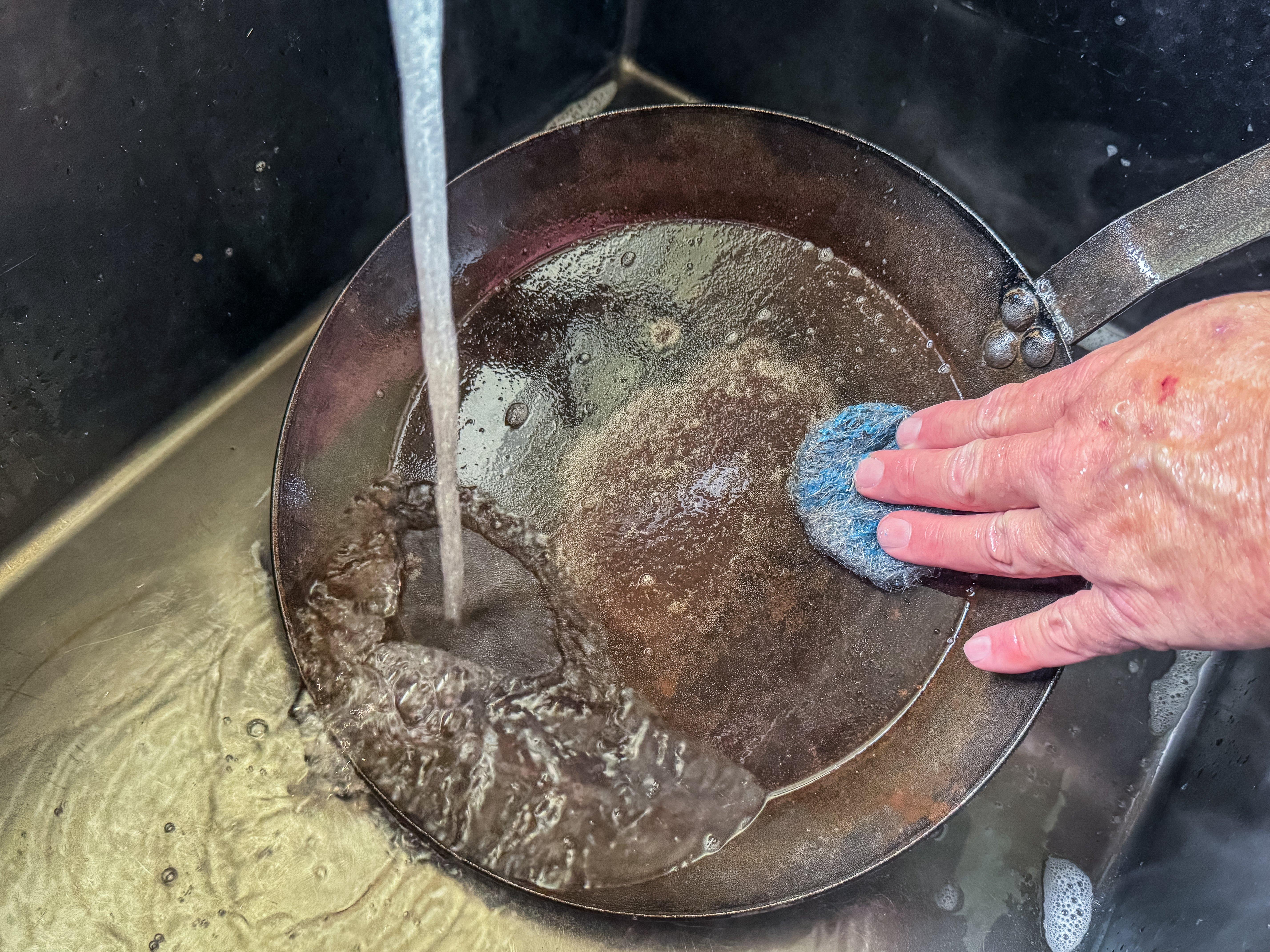
Start with soap and a good scrub to remove any stuck on debris.
Now, take a look. If the pan looks and feels smooth, you are ready to season. If you still have a few rough spots, repeat the steps until the pan is smooth to the touch. Don’t worry if you see dark or discolored areas. They will even out with use. Just make sure the metal is clean, smooth, and rust free.
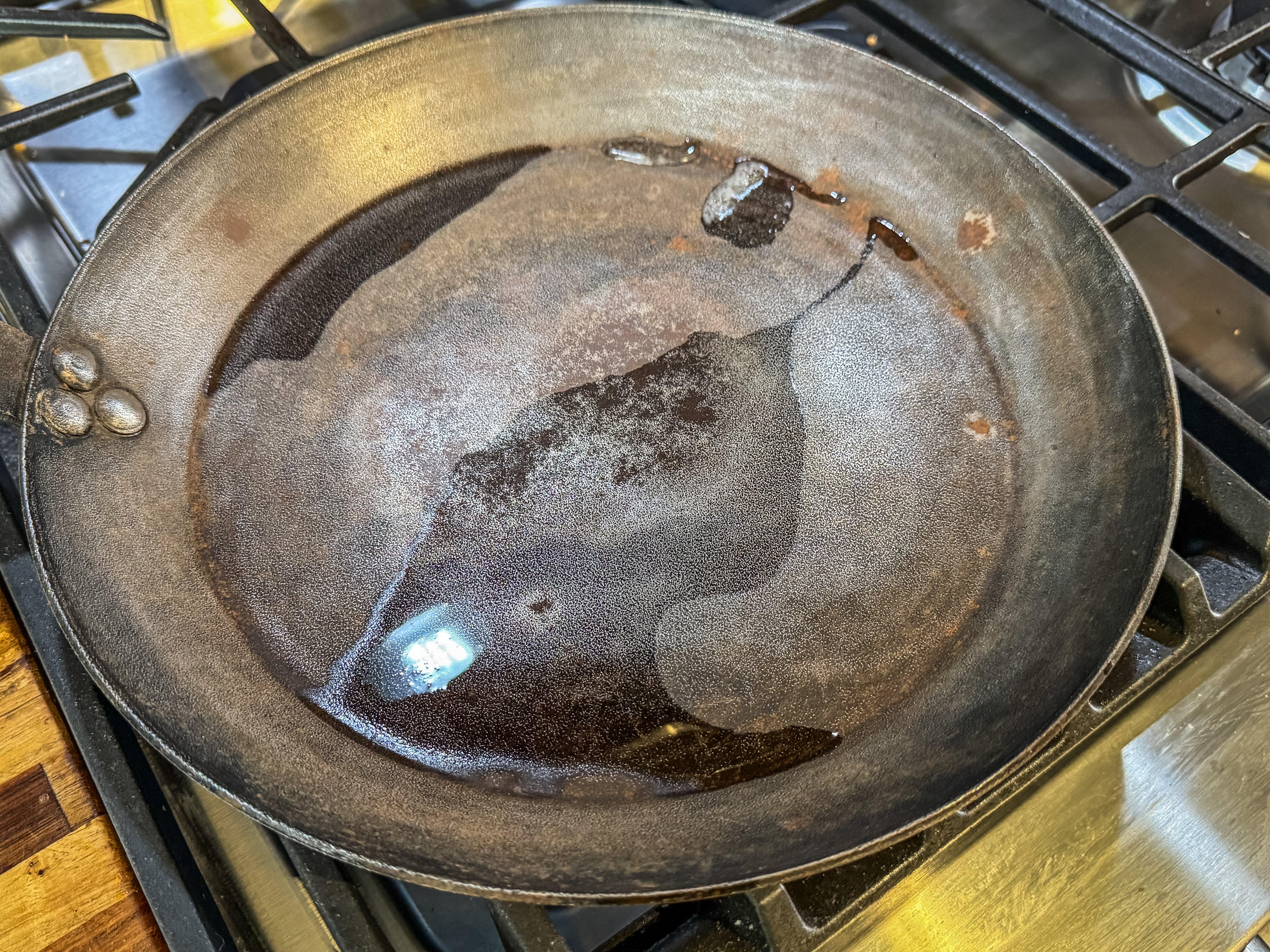
After cleaning, dry the skillet over heat before seasoning.
Next comes the seasoning step. You can treat carbon steel the same way you do cast iron, with a light coating of oil and an hour or two in a hot oven, but you don’t need to. Simply heat the skillet over a medium-high burner. Once the skillet is hot and completely dry, pour in a small amount of a high smoke point oil. Canola, grapeseed, avocado, or peanut oils work well. You don’t need much, just a tablespoon or two at a time.
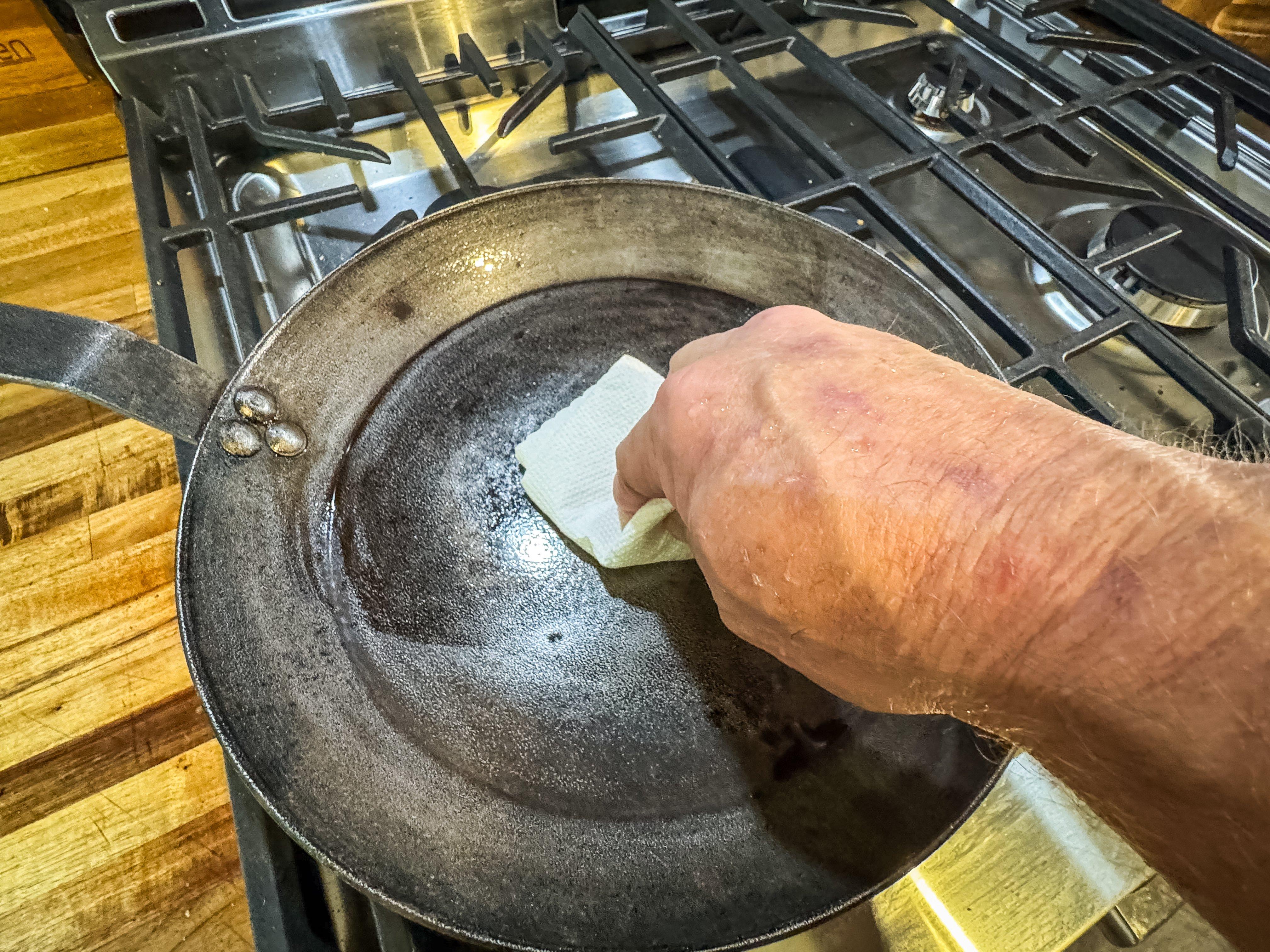
Season by rubbing on light layers of high smoke point oil and heating until the pan stops smoking before applying a new layer.
Now remove the pan from the heat and take a clean, dry cloth that you are holding with a set of tongs and rub the oil evenly over the cooking surface. Be careful, as the pan is still smoking hot at this point. Once the entire surface of the pan is covered with a thin coat of oil, return it to the heat. The oil will start to smoke. Watch it, and when the smoke slows down, remove it from the heat and repeat the oiling step. Be careful. Use the tongs. Return the pan to the heat. Repeat this step a total of three or four times.
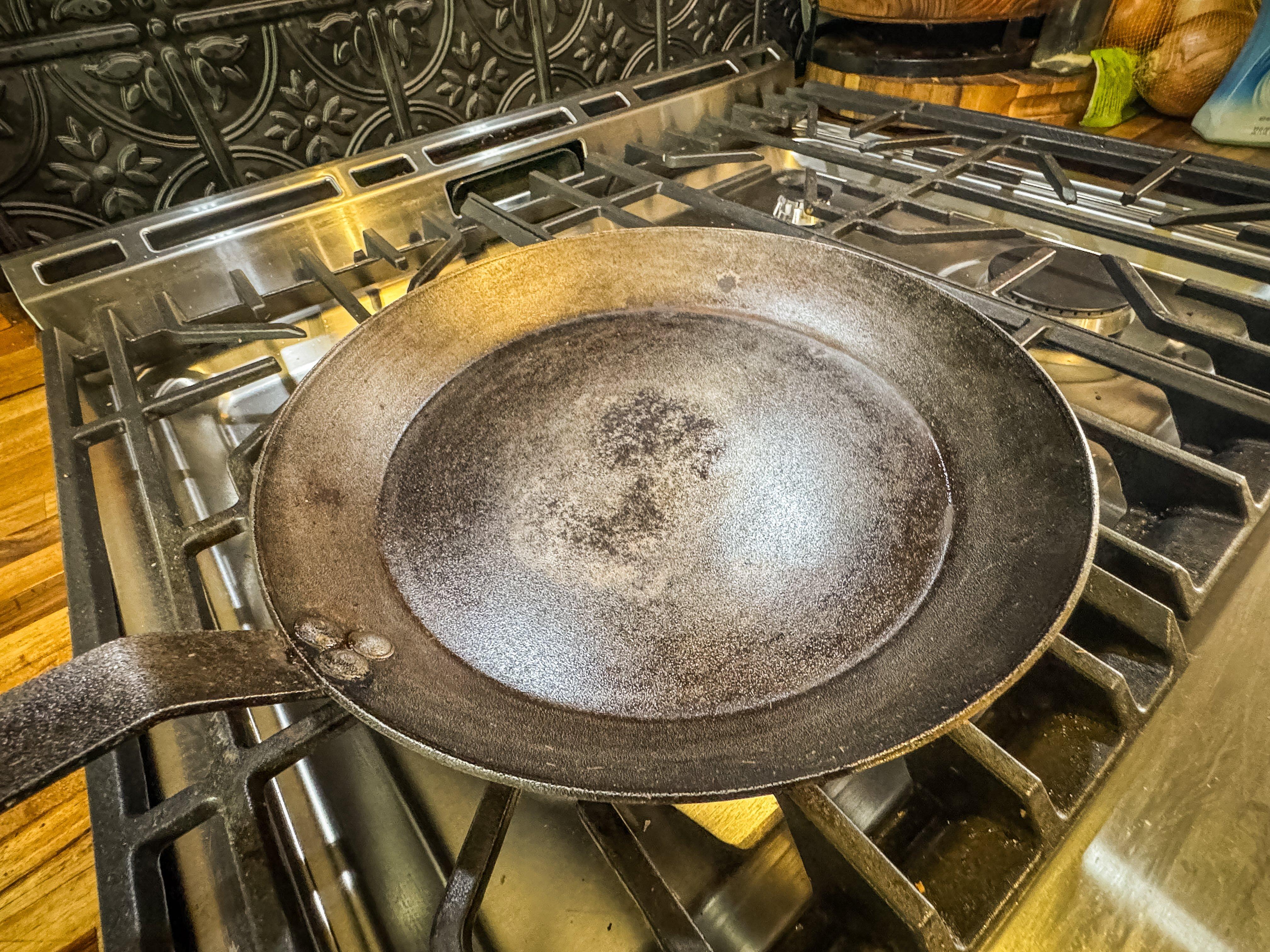
Repeat the oiling and heating steps until the skillet is dark and shiny.
That’s it. Your pan is ready to use. The surface will darken with time and use and stay nice and slick with proper care. I like to wash my carbon steel after each use (soap won’t hurt it), then dry it over medium heat. Once the skillet is dry, I apply a very thin layer of oil before cooling and storage.


